The Pony Express, famed in movies, western lore and pretty much known to nearly everyone growing up in America, even if they're not really sure what it was. The image is there.
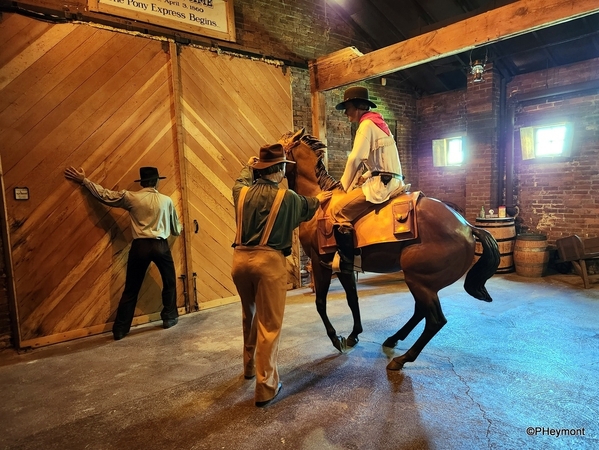 Preparing to leave the stable for the next leg...
Preparing to leave the stable for the next leg...
In St Joseph, Missouri, the eastern end of the service that was created to carry mail to far-off California, a small museum that occupies the stable where it started, fills in the blanks with a wealth of fascinating background and artifacts.
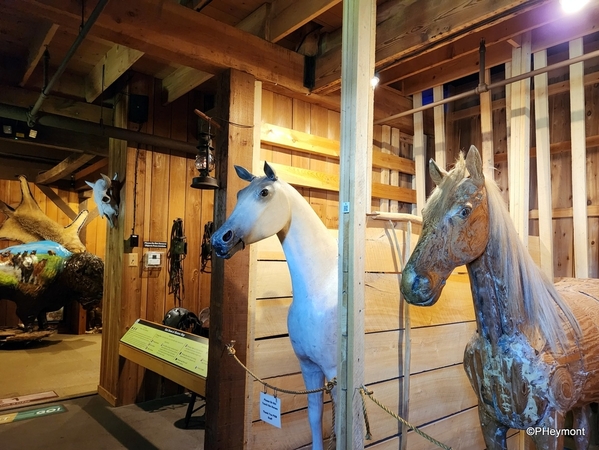
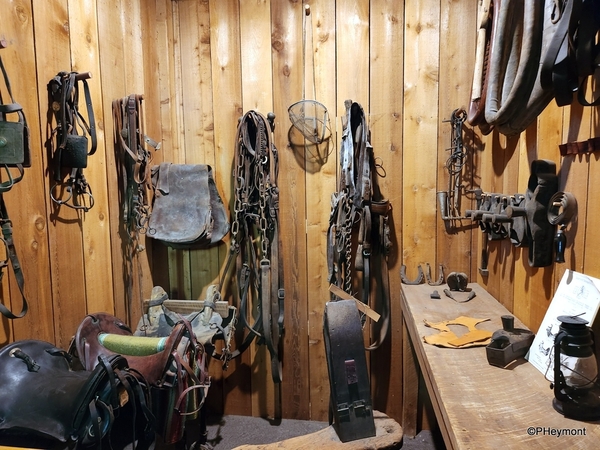
Maybe we should start with possibly the least-known facts about the Pony Express: it only lasted 18 months, from April 1860 to October 1861 and it was a financial failure. The two facts aren't unconnected. Setting up a system of relays that used 153 stations along the way to Sacramento, with 80 or so riders and as many as 500 horses as well as station agents and liverymen was not cheap.
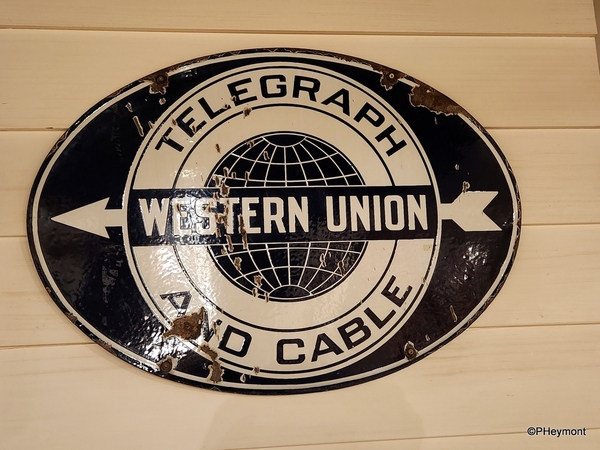
And, once the first telegraph wire, completed in 1861, turned the time for communicating with the West Coast from 10 days by pony to seconds by wire, it became unnecessary and shut down in days. Eight years later, the railroad reached California, and provided a faster way for freight than the wagons that had crossed the country for decades.
The origins of the Pony Express lie, really, in California. When the Gold Rush of the late 1840s helped bring a huge population growth, and statehood, to the West Coast, there was concern over the lack of connection to the rest of the country, especially as tensions rose between North and South.
A government contract to provide fast mail service to California was put out to bid, and was won by the firm of Russell, Majors and Waddell, which already had big contracts to carry supplies to western Army posts. They set about building out the network, and wheedling more money out of backers and officials.
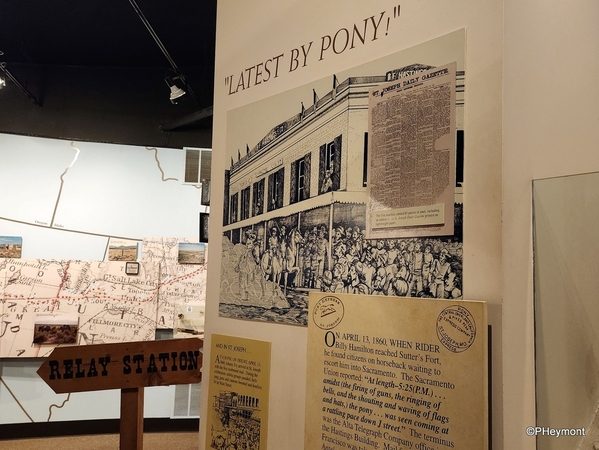
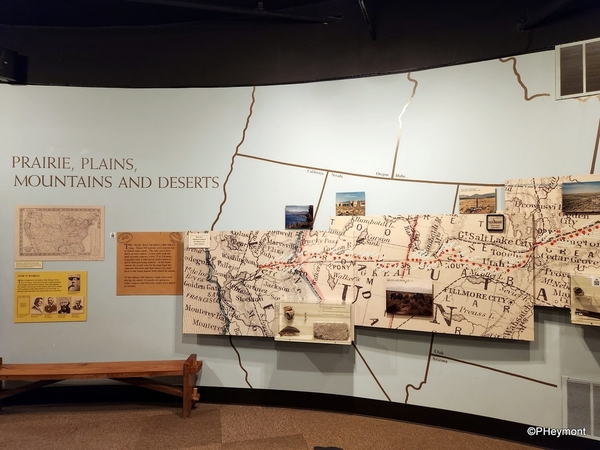
Galloping across vast and often empty spaces including over the Rocky Mountains was no easy or safe journey; the company advertised for riders who were young, unmarried and willing to take risks. And never to use foul language!
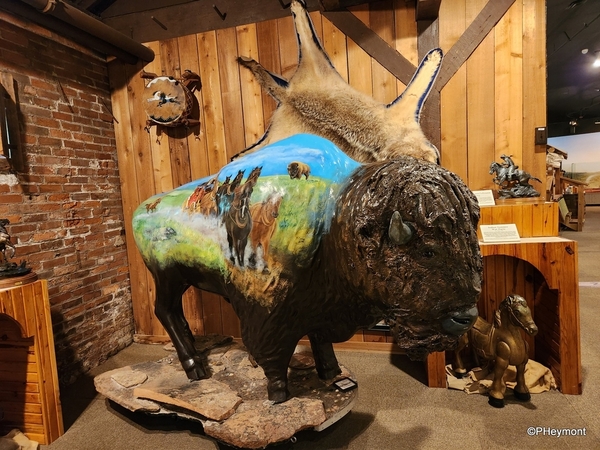
On average, a rider and horse went 10-15 miles between stations, and a new rider took over every 75 miles or so. Average speed was about 10 miles per hour, and the whole trip would involve about 75 horses and 15 riders. For the first few months, it ran once a week, and then twice-weekly until the end.
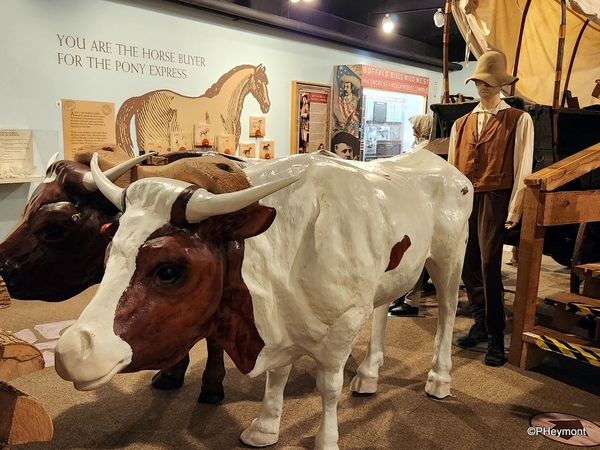
Riders carried up to 20 pounds of mail in a special saddle called a 'mochila,' which included carrying compartments. Because of the weight limit, letters sent by Pony Express had to use special lightweight paper. Letters were stamped with the date the ride started, and then again when they reached the end of the trip.
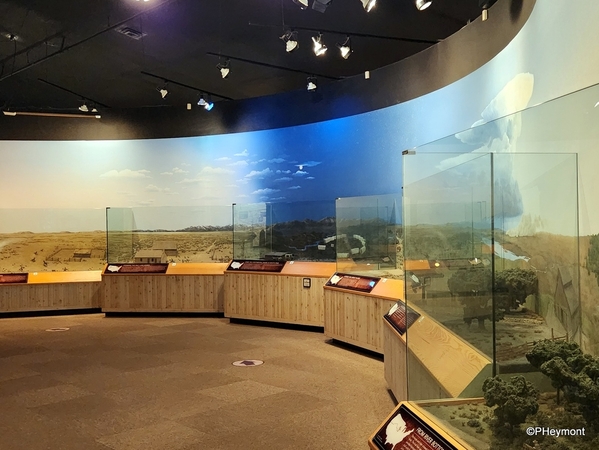 Models of the wide variety of terrain the Pony Express crossed
Models of the wide variety of terrain the Pony Express crossed
The huge wall map of western trails, including the Pony Express, was a feature at the Hotel Robidoux, once St Joseph's premier hotel, but now just a memory. The map had several temporary homes before arriving at the Pony Express Museum. The bottom picture shows its unveiling in the 1920s.
A little bit of urban archeology: excavated foundations of the present stable and a predecessor at the museum.
In an added area of the museum, a gallery traces information about the riders: Where they came from, what their lives were like, and in some cases, what happened to them later, including Johnny Fry, the first rider on the first run, who was killed in 1863 by Confederate guerillas while serving as a Union scout.
Fry figures in one of the more intriguing exhibits: For many years, there were disagreements over who had been first. Many speculations made their way into books and articles and became accepted, often on little evidence, as fact. But most focused on Fry and a man named Billy Richardson.
In a fascinating table that could be a model for research, a 1923 attempt to settle the question listed all the possible claimants, who put forward their names and when, and what evidence had been cited. It didn't solve the puzzle, but it did show a real effort. The ultimate resolution came in 1938 when Billy Richardson, still alive, told reporters that Fry was the one, and that he had only carried the bag from the station to where Fry took it at the local ferry dock.
There's also an area displaying some of the kinds of artifacts that have kept the story of the Pony Express alive, including commemorative stamps that have been issued over the years by today's Postal Service.
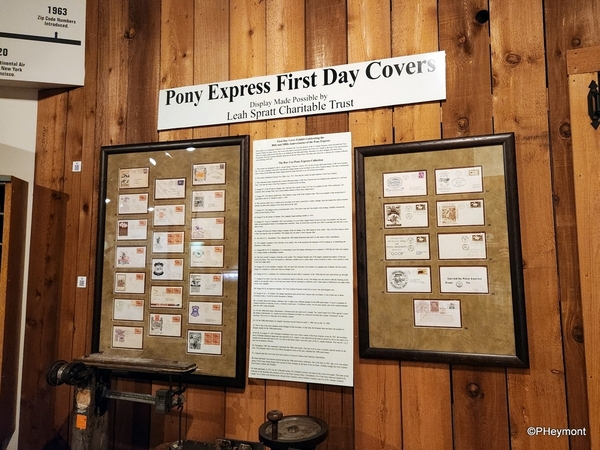
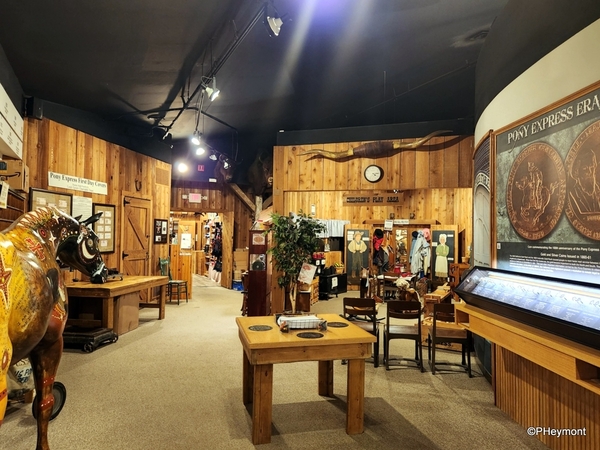
A play area for children features a variety of rocking horses and 'western' equipment. And, of course! there's a shop where souvenirs can be had.
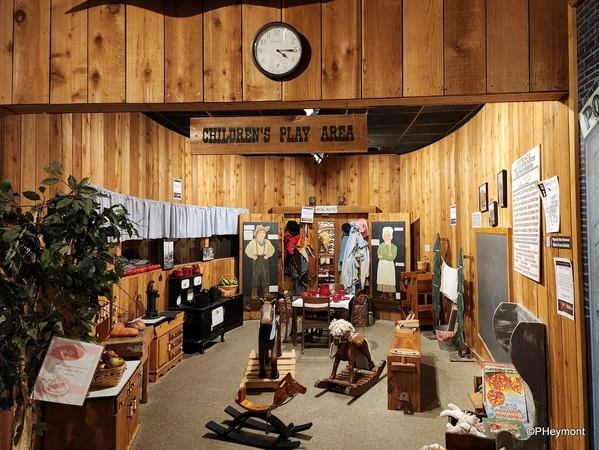

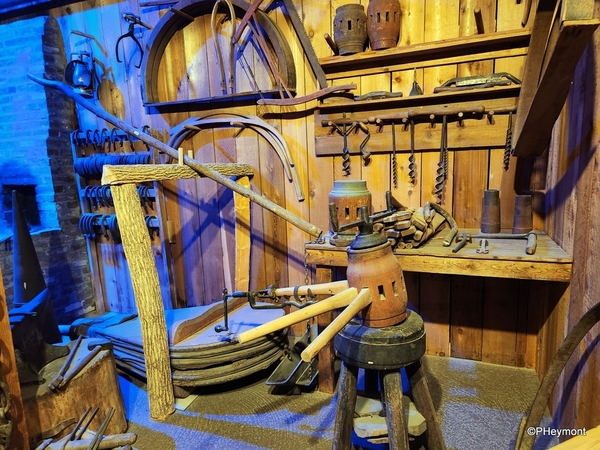
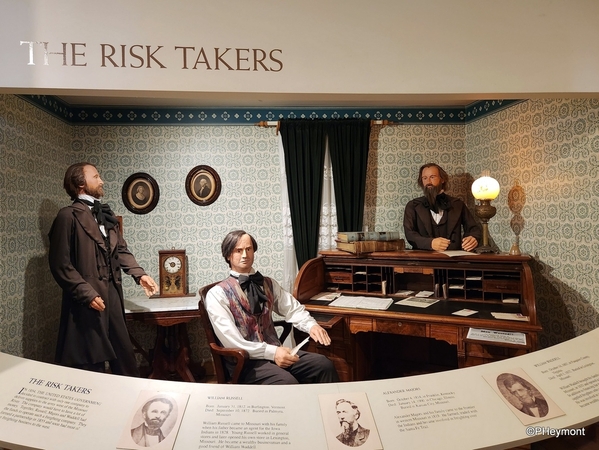
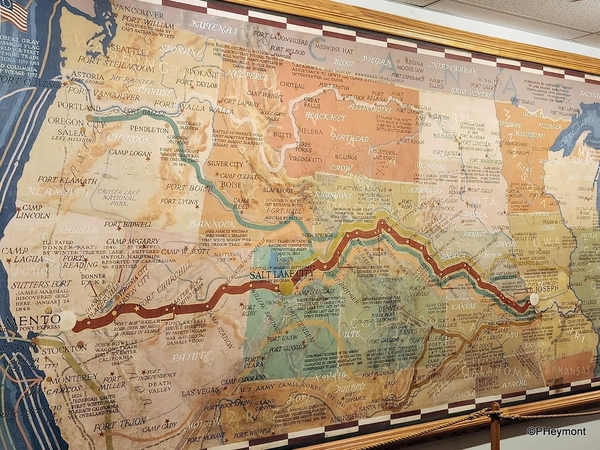

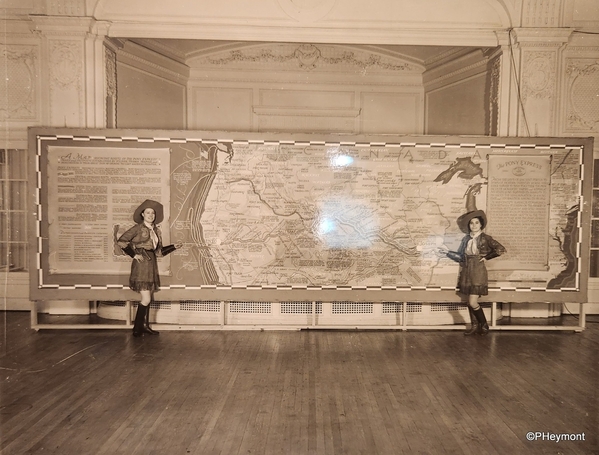

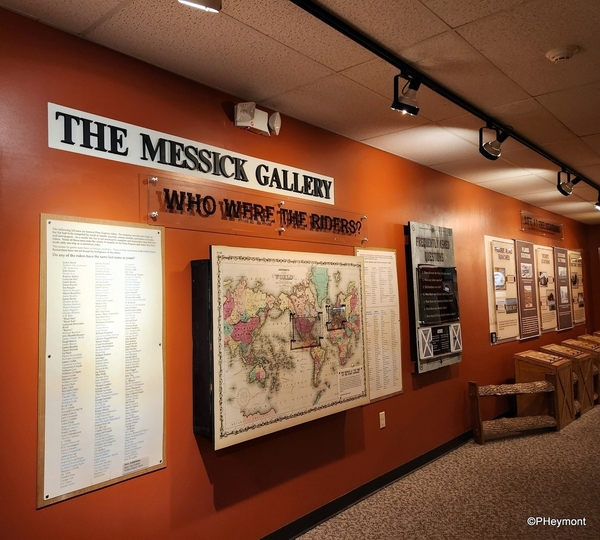

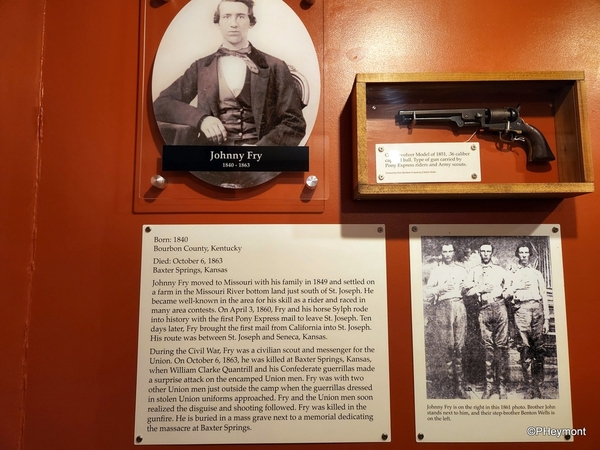
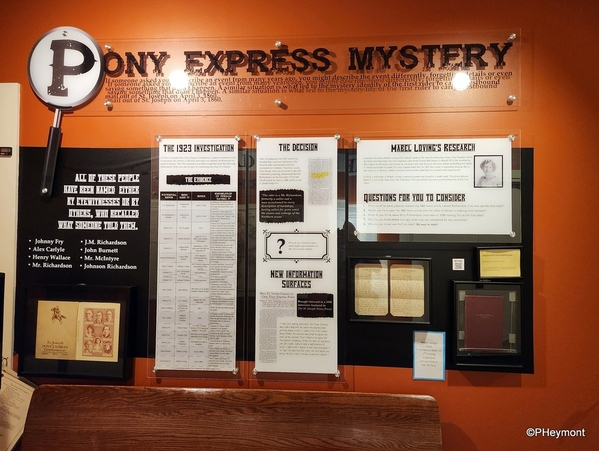
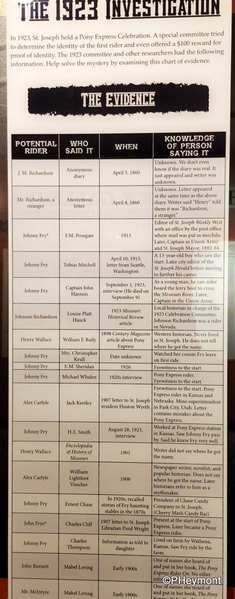
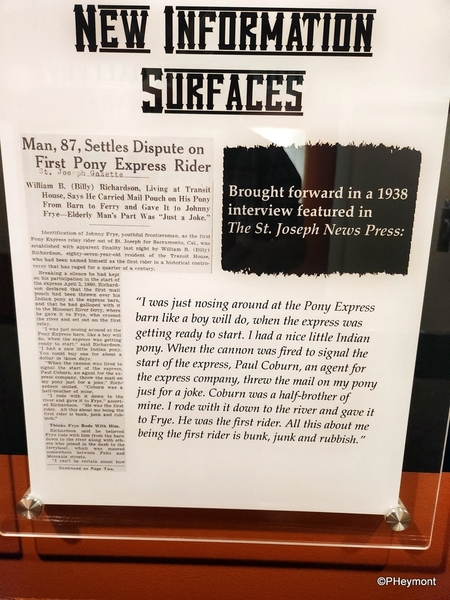
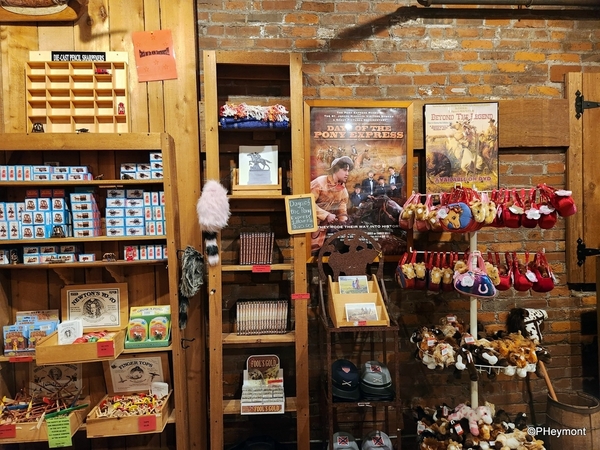

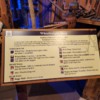





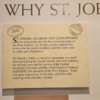


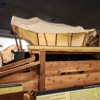


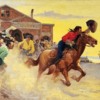

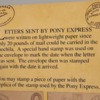
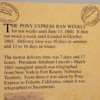
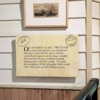


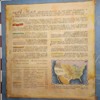












Comments (3)